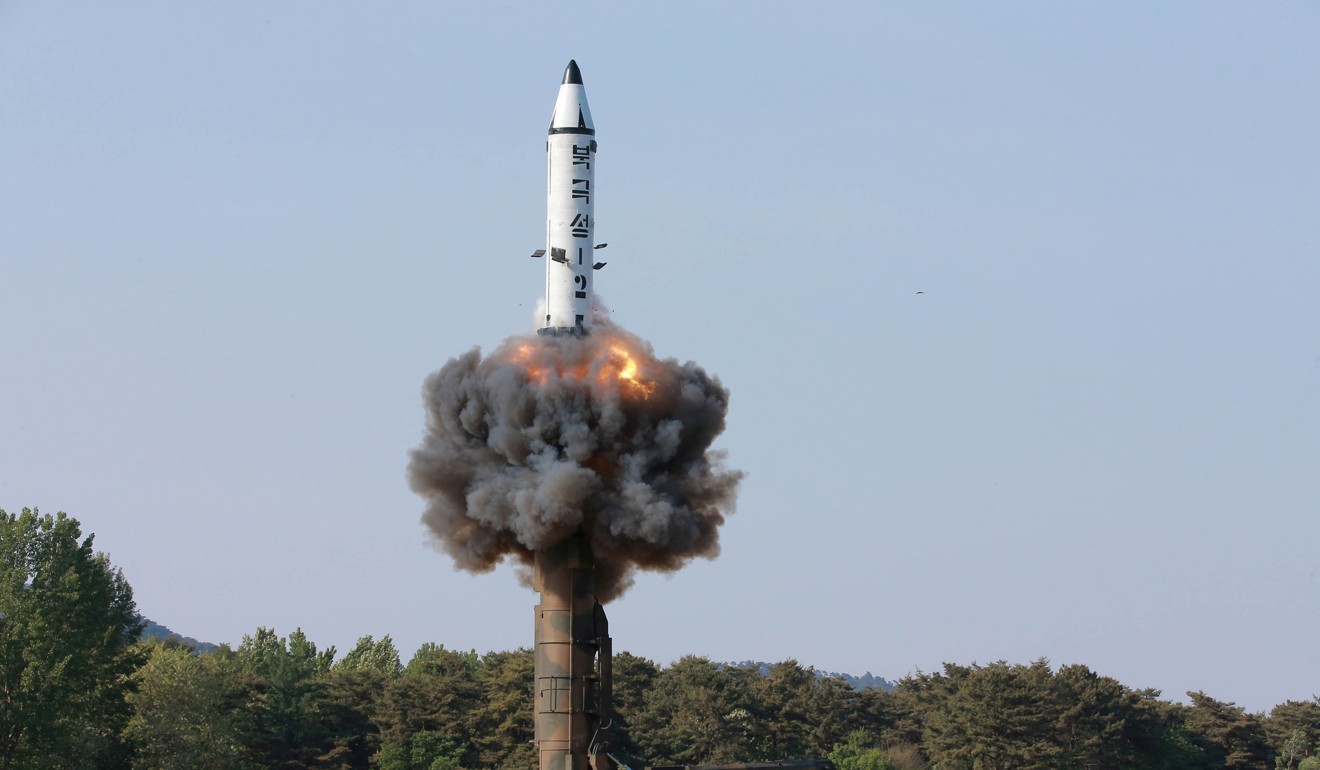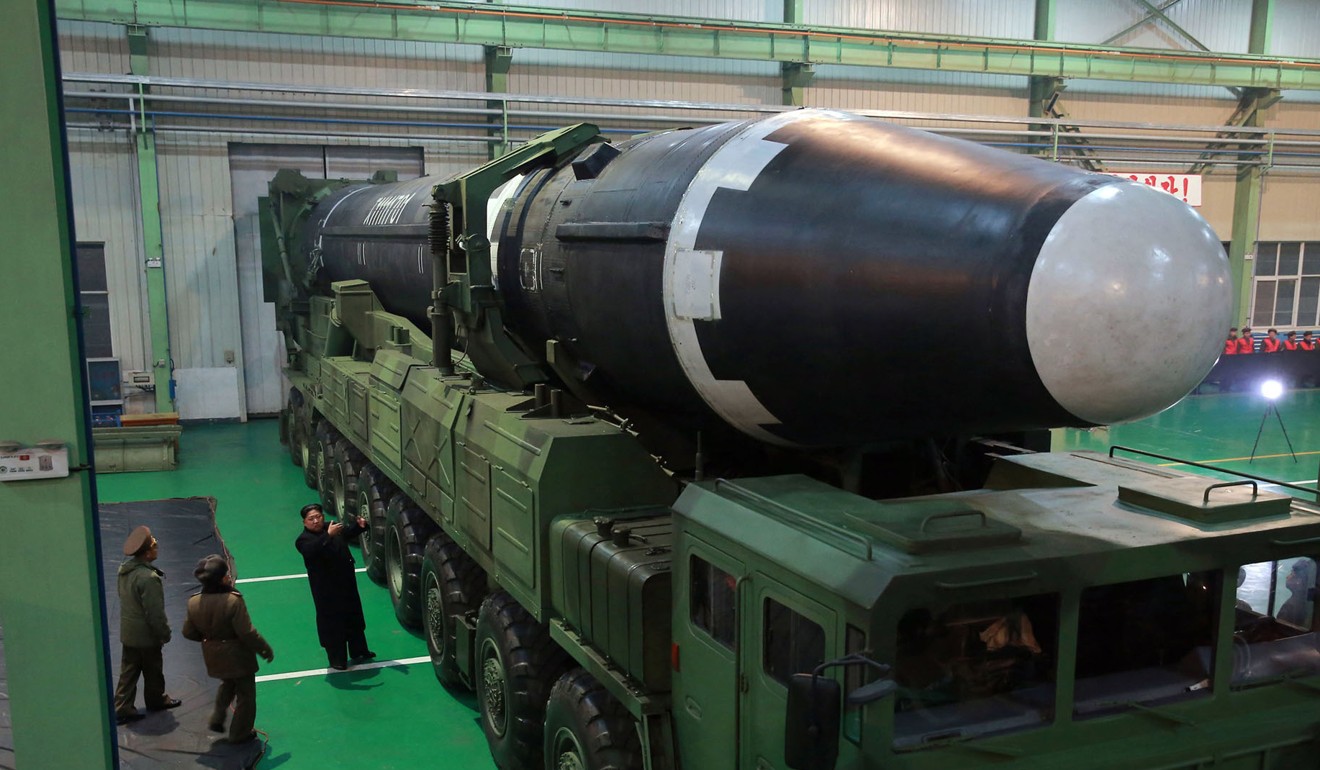
What’s next after North Korea’s successful launch of rocket that can strike US?
Analysts predict first submarine-based launch and expect China to strengthen defence as a result
North Korea is poised to intensify its rocket-testing programme – including the first test of a submarine-launched missile – following the successful trial of a rocket that can hit the US mainland, according to military analysts.
On Wednesday Pyongyang tested its new Hwasong-15 an intercontinental ballistic missile (ICBM).
Analysts now expect further tests, including an upgraded, submarine-based version of its Pukguksong missiles.
Song Zhongping, a retired instructor from the People’s Liberation Army’s strategic missile force, said the North had the capacity to step up tests of its land and sea-based missiles in the Pacific.
Pyongyang last tested its land-based Pukguksong-2 in February and May this year and it is expected to have been working to develop its submarine-launched Pukguksong-3, which has a range of over 2,000 kilometres.
“Pyongyang will also have frequent tests on its solid-fuel Pukguksong series to prove the country is going to have a real nuclear combat capability,” Song, who is a now Phoenix TV military commentator, said.
“North Korea will possibly launch more tests of the Hwasong-12 and Hwasong-15 ICBMs, with the latter being armed with nuclear warheads to conduct full-scale nuclear tests in the Pacific Ocean.”

Macau-based miliary analyst Antony Wong Dong said that the new solid propellant Pukguksong-3 will pose a direct threat to China as the missile has been designed to be launched from protective canisters, which is more difficult to locate and destroy in advance.
“I think the latest missile test developments on [the Korean Peninsula] will push China to deploy its HQ-19 anti-ballistic missile interceptors in Liaoning province,” Wong said, adding that Beijing has completed radar systems along its borders with the North.
The Pukguksong-3 featured in the massive military parade on April 15 to commemorate the 105th anniversary of the birth of Kim Il-sung, the North’s founding leader and grandfather of the current leader Kim Jong-un.
The Kim family has seen the development of its nuclear programme as the surest means of sustaining its regime.
Both the Pukguksong-2 and 3 are believed to have a range that would allow it to target Japan and US military bases in the region, but not the US mainland.
Missile experts said the submarine and land-based technologies overlap, and developments in either can benefit both.

Beijing-based military expert Zhou Chenming said mounting tension on the Korean Peninsula had put Beijing on high alert.
“Beijing still believes the tensions were stimulated by intensive joint drills between the US, South Korea and Japan,” he said.
“China will also increase cooperation with the US, sharing nuclear and missile intelligence about the North, as well as providing more analysis from a Chinese perspective to prevent misjudgments caused by culture differences.”
Both Song and Wong agreed that the latest Hwasong series test indicated that the North had been able to develop its own advanced ICBMs based on missile technology acquired from Russia and Ukraine.
Song said photos and other information disclosed by Pyongyang showed the Hwasong-15 missile was bigger than the Hwasong-14, but it needed 50 minutes’ launch preparation to reach its target height, far longer than its predecessor.
“There is no doubt that the North has met a certain level in missile technology, but that information shows the latest launch is still a high risk test,” Song said.
However, Song said China will not change its long-standing policy of nuclear non-proliferation on the Korean Peninsula by recognising the North as a “nuclear nation”.
“Once Beijing allows North Korea to be a nuclear nation, then many neighbouring countries like Japan will follow it to seek legitimacy from owning nuclear weapons. It will cause a great threat to China,” Song added.

